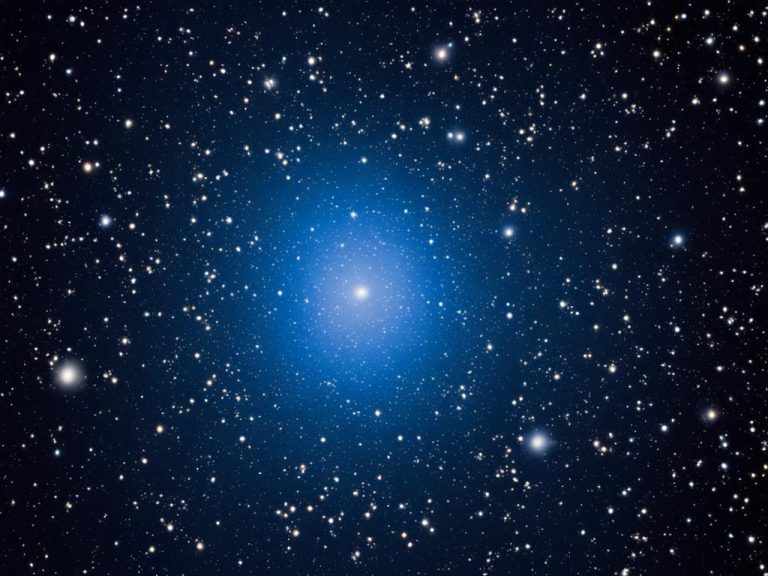Explore the Telescopium Constellation Mysteries
Did you know the Telescopium Constellation hides some of the night sky’s best finds?
This constellation is one of the 88 known to us. It got its name from the telescope. Telescopes have taught us a lot about space.
Telescopium is in the southern sky. It’s full of hidden treasures. Even though it’s hard to see from the north, it’s worth checking out for anyone who loves stars.
It’s next to Sagittarius, Corona Australis, Ara, and Pavo. Most of its stars are hard to see. But, there are interesting things to see here with a big telescope.

Key Takeaways:
- The Constellation Telescopium is part of the 88 official constellations recognized worldwide.
- Named after the telescope, Telescopium represents the remarkable tool that revolutionized our understanding of the cosmos.
- Located in the southern celestial hemisphere, Telescopium is best viewed during the summer months and is not easily visible from northern latitudes.
- Telescopium is bordered by the constellations of Sagittarius, Corona Australis, Ara, and Pavo.
- While its stars may appear dim, Telescopium is home to intriguing deep-sky objects, including the galaxy group IC 4889 and the radio source Telescopium A.
The 88 Constellations: A Celestial Legacy
The night sky is a breathtaking canvas adorned with the beauty of 88 constellations. Recognized by the International Astronomical Union, these constellations have captivated the imaginations of ancient civilizations and continue to inspire stargazers today.
These celestial patterns tell tales of mythological heroes, majestic animals, and legendary gods. They are steeped in rich history and carry the wisdom and folklore of our ancestors.
,the mighty hunter, and Draco, the dragon who guards the celestial pole, help guide travelers and astronomers. They show our desire to understand our place in the vast cosmos.
Exploring the 88 constellations offers a chance to learn about science and cultural history. It connects us with ancient civilizations and their views of the night sky.
Looking at the stars reminds us of all those who have observed them in wonder. The constellations invite us to explore human history, filled with mythological tales.
International Star Registry: Immortalize Your Connection to the Stars
While the constellations have their stories, you can make a personal link to the night sky. International Star Registry lets you name a star after someone and connect your name or a loved one’s name to it.
Think of the joy someone will feel getting a star named after them. It’s a special way to celebrate occasions or remember a loved one.
Choosing International Star Registry means your star name is officially published. You get the star’s coordinates to find it in the sky anytime.
Whether through the 88 constellations or naming a star, the night sky’s myths inspire us. It’s an age-old tradition teaching us to explore, dream, and look at the stars with wonder.
Exploring the Telescopium Constellation: A Glimpse into the Celestial Telescope
The Telescopium Constellation is named after a tool that teaches us about space. It was named in the 18th century by Nicolas Louis de Lacaille. This group of stars is in the Southern Hemisphere, near Sagittarius, Corona Australis, Ara, and Pavo.
This group doesn’t have many bright stars. But it still attracts people who love the sky. It has cool things to see like a big, colorful cloud in space (IC 1747) and stars that look like they’re dancing together.
Telescopium doesn’t have old stories connected to it like others do. But its name shows how important telescopes are for studying space. When we look at it, we think about all the amazing things telescopes let us see in space.
Telescopium and February Celestial Events
In February, the Telescopium Constellation is full of exciting space events. On the 14th, a comet swings really close to the Sun, coming within 1.32 times the distance of the Earth to the Sun.
On the 15th, the Moon and Jupiter look amazing next to each other. The Moon is super bright, and Jupiter is a big planet. They make the night sky extra special.
On February 16th, the Moon gets close to a cluster of stars called Pleiades. This happens in the night sky just before morning. It looks really pretty with the Moon’s bright light next to the stars.

Also, on February 19th, there’s a great time to see a faraway galaxy known as M81. It shines faintly but shows up well through telescopes. It’s at a good spot in the sky for watching.
Lastly, on February 24th, the Moon is full. It’s a bit smaller and farther away, so it looks really cool. Its light makes the night seem magical.
Stargazing and the Telescopium Constellation
People who love staring at the stars can use telescopes to see lots of cool things. Watching the Moon next to Jupiter can be fun even without a telescope. You’ll need good binoculars, though.
If you live in the Southern Hemisphere, the Telescopium Constellation is great to see in the summer. It’s between other well-known star groups. The Telescopium makes the night sky look very different and wonderful.
The story of the Telescopium Constellation is about learning and exploring space. It shows great appreciation for what telescopes have taught us. The constellation inspires us to keep looking for new things in the vast universe.
Deep Sky Objects and the Telescopium Constellation
This constellation is full of cool space objects, like a big group of stars and a tiny galaxy. People who study space love looking at these things because they’re interesting and beautiful.
Special lists tell astronomers where to find hidden space wonders. With a big telescope, they can see amazing things in the Telescopium area and beyond.
From simply looking up at the night sky to using a telescope, the universe has so much to show us. Enjoy the journey as you discover the beauty of space.
For more astronomy events, visit here. Learn about the Pavo Constellation’s stories at here. Explore galaxies and how they interact at here.
Buy a Star for someone in Telescopium with International Star Registry
Looking for a unique present for someone special? Think about buying saa star for someone in the Telescopium Constellation. Visit starregistry.com for a special way to mark your big moment.
Naming a star links you forever to the universe. It shows your love, honors someone important, or marks a big life step. For events like weddings, anniversaries, or graduations, it’s a gift that lasts forever.
With International Star Registry, choose a star in Telescopium. Telescopium is a southern constellation and was named by Johannes Hevelius. He introduced it in the 17th century. It stands for the modern telescope and has a rich history in astronomy.
Ready to name a star in Telescopium? Head to starregistry.com and start your celestial adventure. This unique and symbolic gift will be deeply memorable. It signifies your timeless link to the stars.
The Allure of Telescopium: Immortalize Your Connection to the Stars
Telescopium isn’t as famous as other constellations, but it celebrates human cleverness and exploration. By naming a star through International Star Registry, you join a celestial history. Many have marveled at the stars through time.
Telescopes are key in our view of the universe and its mysteries. They help scientists and astronomers see deep into space. They find new wonders and secrets of the cosmos.
But Telescopium is special for more than its place in the sky. Naming a star here is a symbol of love, memory, and joy. It lets you tie your life to the stars and helps with science and education.
It’s a great way to mark an event, remember someone, or show your love for space. International Star Registry lets you buy a star and get a special package. This includes a certificate, a star chart, and a place in the official star catalog.
Your star is like no other, with proof of its name and its own copyright. Seeing it in the sky, you know your star in Telescopium is a forever part of the universe’s beauty.

Conclusion
The Telescopium Constellation is not as popular as some, but it’s full of wonder. Exploring its mysteries deepens your love for the night sky’s beauty.
Naming a star with International Star Registry in Telescopium is a great way to remember important times. Whether for yourself or as a gift, it’s a meaningful link to the sky.
Visit starregistry.com today. Name a star in Telescopium and start your adventure among the stars.
FAQ
What is the Telescopium Constellation?
The Telescopium Constellation is a part of the 88 known constellations. The International Astronomical Union named it. This constellation is quite new. It’s named after the telescope, a device that changed how we see the sky.
Where is the Telescopium Constellation located?
It’s in the southern part of the sky. You can see it best in the summer. If you’re far north, you might not see it. It’s near Sagittarius, Corona Australis, Ara, and Pavo.
Can I name a star in the Telescopium Constellation?
You sure can! Naming a star in this constellation is possible through International Star Registry. It makes a unique and special gift. Your choice also helps with space research and education.
What is the significance of the Telescopium Constellation?
The Telescopium Constellation honors the telescope. It stands for our ability to explore the heavens. This symbolizes our curiosity and drive to learn more about the universe.
Source Links
- Explore the Night Sky: A Beginner’s Guide to the 88 Constellations – https://astrotelescopium.com/blogs/news/unlocking-the-mysteries-of-the-night-sky-a-beginners-guide-to-the-88-constellations
- Telescopium Constellation | Star Map & Facts – https://www.go-astronomy.com/constellations.php?Name=Telescopium
- Telescopium – https://www.starregistry.com/constellation-name/
